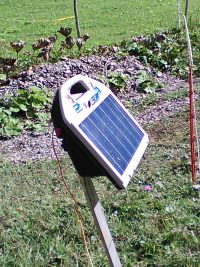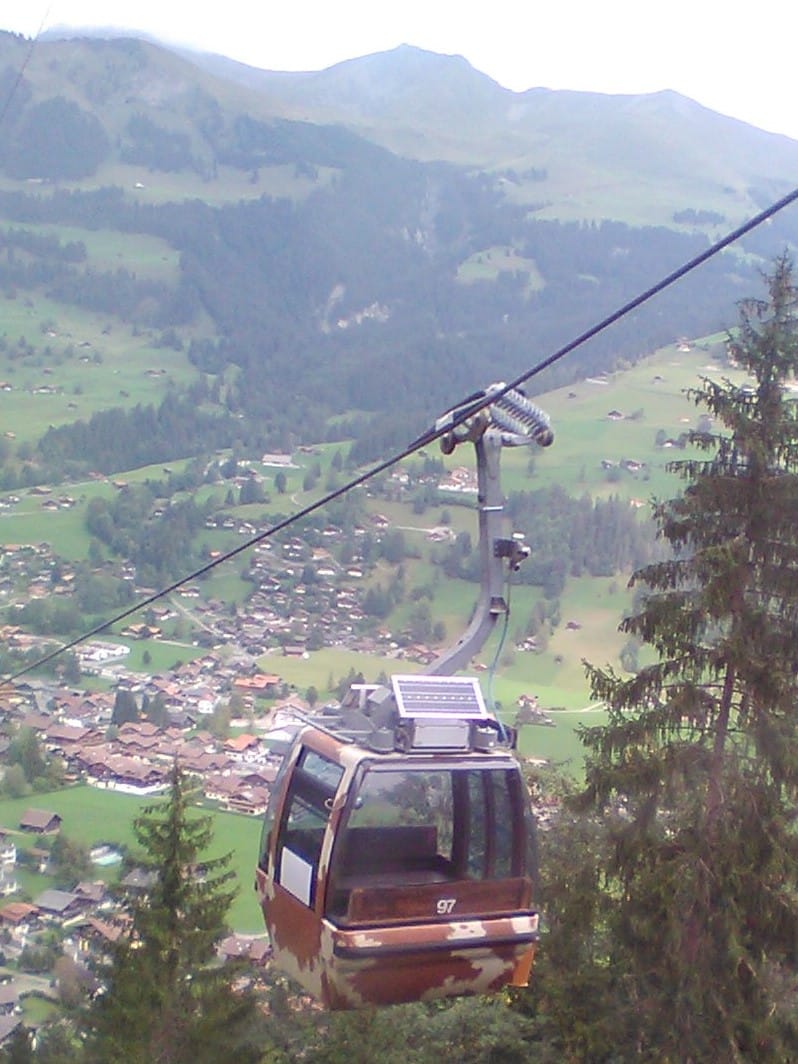Independent with solar power from SOLARA
Solar for commercial applications and self-sufficient devices. Self contained-, off-grid- and stand-alone systems
A multitude of products and devices have to be supplied with electricity independent of the grid. Either there is no grid connection available or the connection is too expensive and extravagantly. On top of that there are over two billion people on the earth without access to the regular grid.
But without electricity, many devices do not work today. Parking ticket machines, street lighting, as well as the entire communication via mobile phone or internet often only work based on a reliable power supply. SOLARA solar modules and complete stand-alone systems, also known as stand-alone systems or OFF-GRID SYSTEMS, produce the necessary electricity in an environmentally friendly way without emissions. SOLARA has high-quality and affordable solutions for reliable solar electrification. For locations without a suitable power connection or remote regions, we have a self-sufficient solar power supply.
Many important applications – safely and reliably supplied with solar power!
The solara stand-alone systems for devices without a power connection

SOLARA-QUALITY SINCE 20 YEARS
Solar modules, components and complete systems by SOLARA are used everywhere there is no reliable power source. In remote areas of the world, on the sea, in technical facilities, in traffic control systems and in telecommunication systems.
Stand-alone-systems by SOLARA are constructed in such a way, that they can withstand the highest climatically stress. They are robust, flexible in use conditions and use the provided sunlight even in unfavourable conditions optimally for energy production.
To ensure the quality and efficiency of the SOLARA products, the modules and mounting systems are produced in Germany.
Each solar panel is tested and certified with strict quality standards by ISO conditions. After completion each solar panel is measured individually under international recognized STC conditions and gets a unique and unchangeable serial number.
Radio stations with solar power

The most important additional equipment in remote areas is the solar power supply with a solar power plant. A radio system is operated electrically and depending on the power of the radio waves, duration of wireless communication etc., needs a reliable solar power supply.
SOLARA offers a variety of different solar power plants for this purpose.
According to their use a distinction is drawn between solar powered radio stations as follows:
 Main radio station, sub radio station, receiving radio station, transmitter radio station, etc. with or without solar system. The ITU (International Telecommunication Union) defines the internationally binding categorization of different radio stations.
Main radio station, sub radio station, receiving radio station, transmitter radio station, etc. with or without solar system. The ITU (International Telecommunication Union) defines the internationally binding categorization of different radio stations.
Whereat the solar power plant is irrelevant. In Germany, the Federal Network Agency holds the frequency management. To operate a radio station it requires an official approval, but not for the solar power plants. Usually the approval of the radio station in Germany is issued with a frequency allocation by the Federal Network Agency, according to the Telecommunications Act.
Various radio stations (selection) which are also supplied with solar power:
 Rescue radio station as emergency beacon according to the ITU “a mobile station of the mobile maritime radio service or of the mobile aeronautical radio service which is used only for rescue purposes and which is on a lifeboat, life-raft or any other means of rescue”. For more than 20 years solar power plants from SOLARA have been reliably supplied lifeboats with solar power.
Rescue radio station as emergency beacon according to the ITU “a mobile station of the mobile maritime radio service or of the mobile aeronautical radio service which is used only for rescue purposes and which is on a lifeboat, life-raft or any other means of rescue”. For more than 20 years solar power plants from SOLARA have been reliably supplied lifeboats with solar power.
Fixed radio-communication service is according to the ITU a “radio service between certain fixed points”. E. g. beam radio, troposphere radio, embassy radio and private mobile radio. Solar power plants proffer in adjacent areas. In many cases the electricity connection, the basic charge and current electricity costs are more expensive than a solar power plant from SOLARA.
A fixed station (land station) is according to the ITU a radio station of the mobile service as a mobile land service, e. g. antennas of GSM-base station and GSM-transceiver. Here as well solar energy is often the first choice due to the greatly reduced costs for solar power plants.
According to the ITU, a radio beacon is a radio station of the navigation radio service whose signals enable a mobile radio station (e. g. in the aircraft) to determine its bearing or direction with respect to the beacon. Even small solar power plants can reliably provide the power supply yearlong.
In inland navigation the land station is a stationary radio station for inland navigation on land and the ship radio station is a mobile radio station for inland navigation on board an inland waterway vessel. The photos show the already common use of solar power plants for the power supply.
Electric pasture fences with solar panels

Electric fences with solar power plants allow a continuous electrical voltage, but the circuit is closed only when the animal comes into contact with the solar powered pasture fence.
 A solar pasture fence is easy to install and easy to modify and expand. The risk of injury from the pasture fence with solar power plants is practically excluded for humans and animals.
A solar pasture fence is easy to install and easy to modify and expand. The risk of injury from the pasture fence with solar power plants is practically excluded for humans and animals.
With solar power through SOLARA solar power plants, a permanent and reliable demarcation of grazing animals is possible. The mobile solar power plants make the adaptation to the needs of animals of all kinds and the landscape conditions possible.
The Association of German Electrical Engineers in VDE 0667 has also presented the planning, installation and relevant safety regulations for electric fence with solar.
The solar electric fence is in many cases without alternative because the use of barbed wire due to the risk of injury to humans and animals is considered too large.
Solar power for the turnouts of the Harz narrow-gauge railway to the Brocken

Two SOLARA solar panels for the railway technology at the Brocken in the Harz (Germany) for safe and long-lasting power supply
After passing the station Goetheweg, at 956m altitude, the narrow-gauge railway goes directly to the Brocken. The points of the route are operated with solar power. In order to guarantee the necessary reliability it was decided to use solar panels from SOLARA. Made in the solar-power-factory Wismar, Mecklenburg-Vorpommern.
Before the train circling the chunks in a spiral 1½ times, every passenger can admire the SOLARA solar panels. On the 18.9 kilometer route to the Brocken railway station at 1,125m, the SOLARA solar panels “Made in Germany” always ensure safe operation of the points. Thanks to solar power with SOLARA solar technology, no expensive power supply had to be laid in the rough terrain on the Brocken.
History of the Brockenbahn
 After the route was opened below the Brocken on June 20 1898, the opening of the remainder to the Brocken took place on October 4 1898. At that time all points had to be operated by hand since solar technology or even solar panels were completely unknown.
After the route was opened below the Brocken on June 20 1898, the opening of the remainder to the Brocken took place on October 4 1898. At that time all points had to be operated by hand since solar technology or even solar panels were completely unknown.
Until 1987 frequented freight trains on the track. It was transported mainly building materials, coal and oil, since no solar energy or solar panels were available. On the Brocken border troops of the GDR and soldiers of the Soviet Union were stationed, which were supplied by the railway. Since the route was in the restricted area since 1952 a pass was required to enter and the regular passenger traffic was shut down between Schierke and the Brocken.
In September 1991, the public transport was reopened with two steam-powered trains. There were first considerations for the use of solar energy with solar panels. The train operation is guaranteed since then by a Mallet-locomotive (1939 developed by Krupp prototype) and a new building of the German Reichsbahn.
The Brocken Railway was privatized in 1993 and has since been operated by the Harz Narrow Gauge Railways (HSB). A few years later, the points on the Brocken were electrified with solar panels by SOLARA from Wismar. High reliability of the solar power plants even in extreme weather conditions and the longevity of the solar panels were decisive for this decision.















